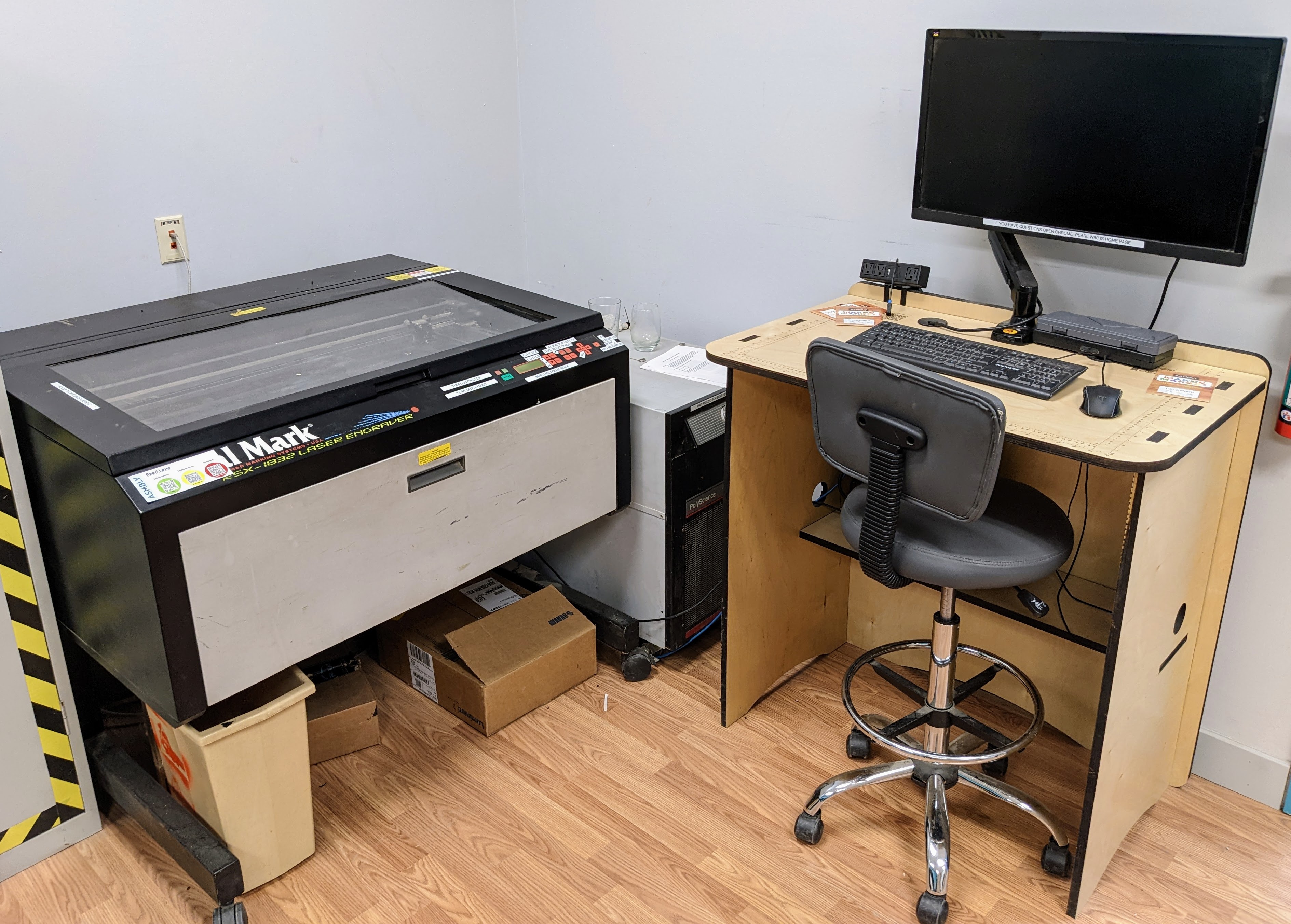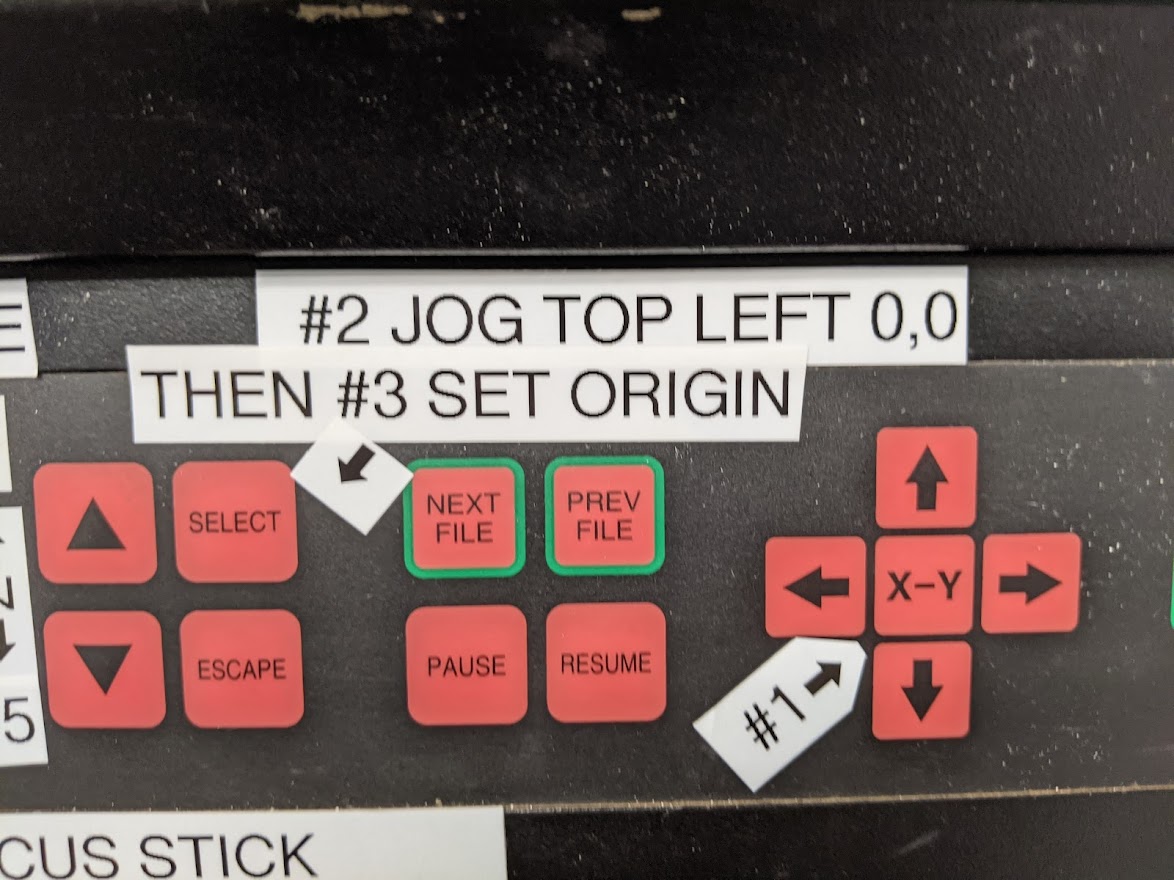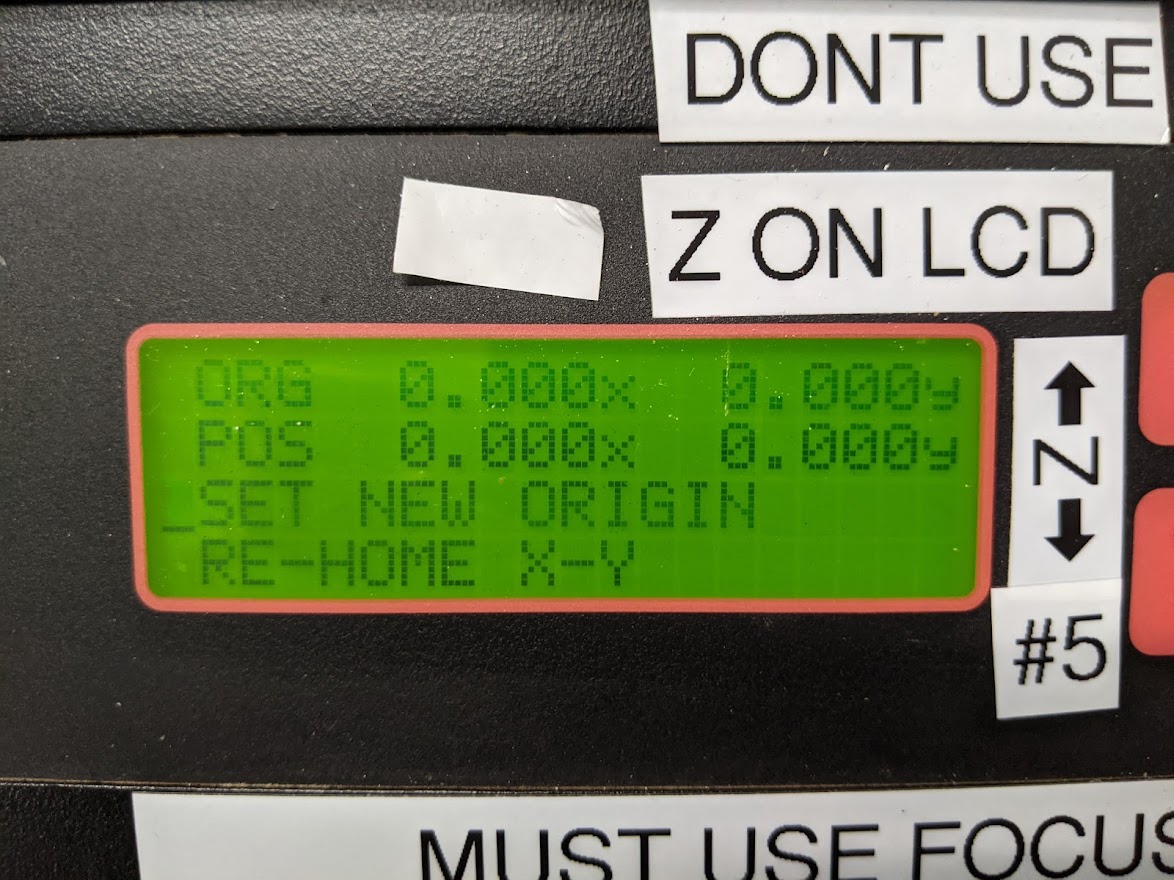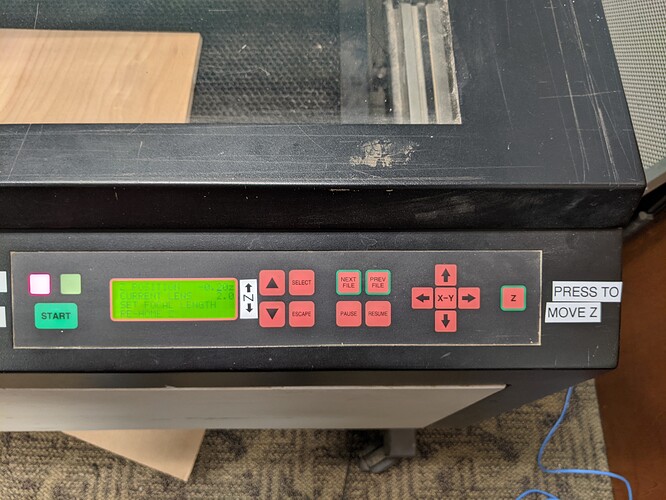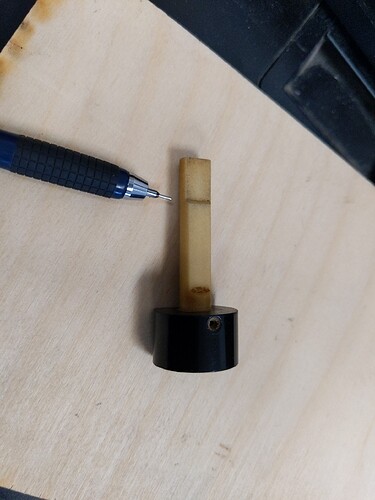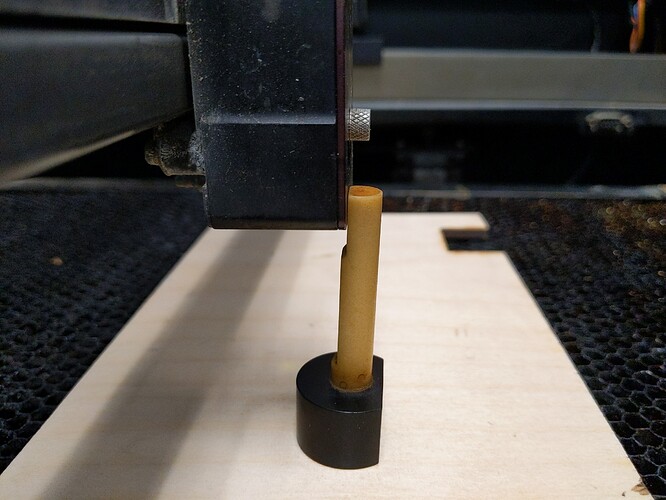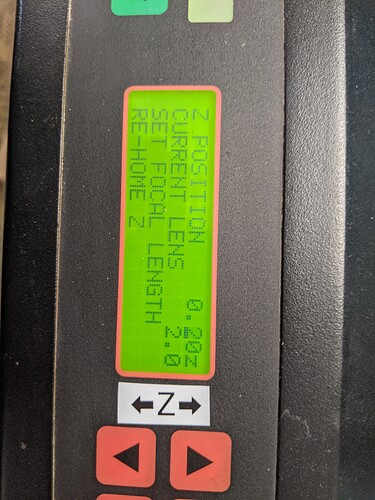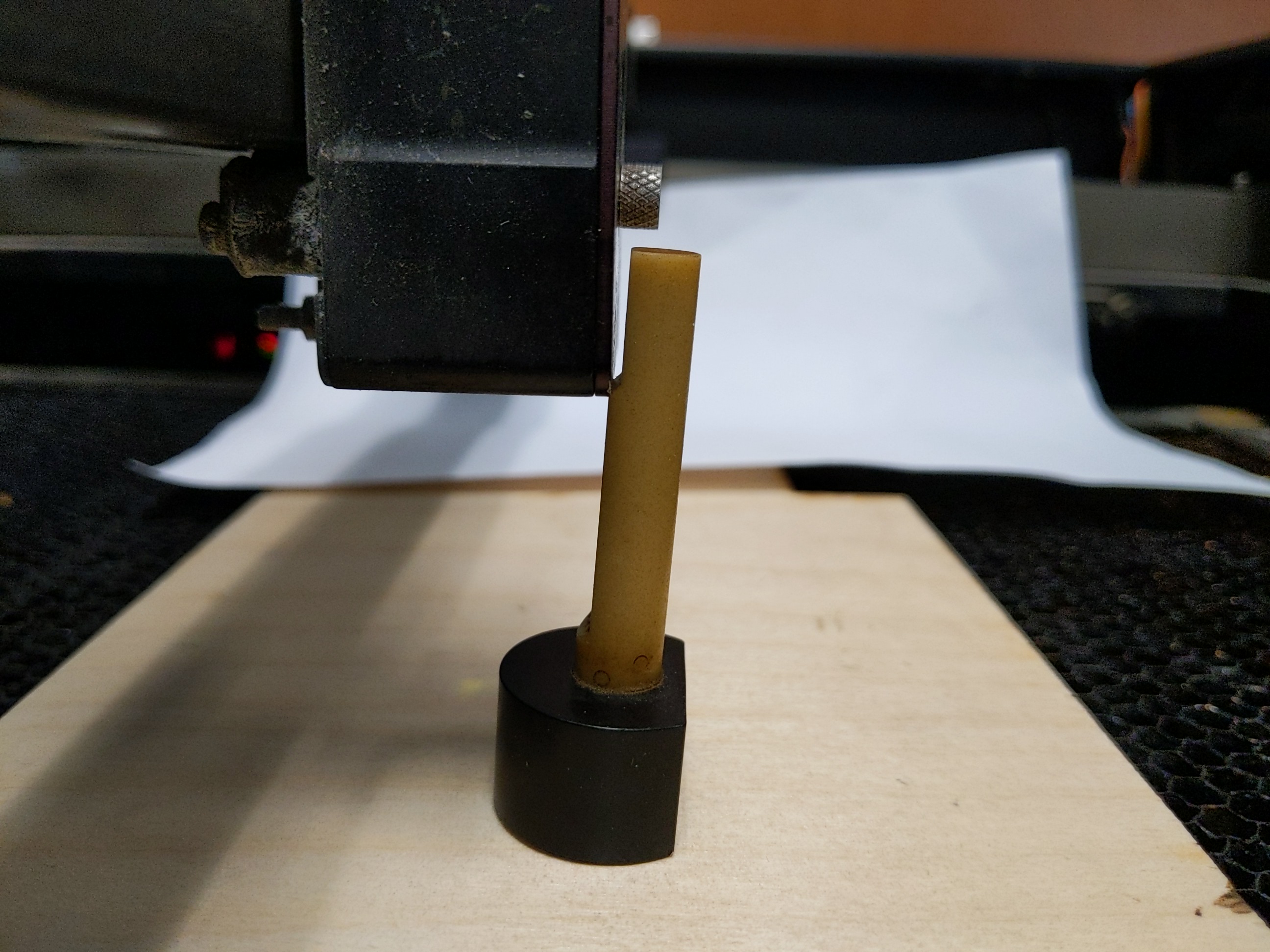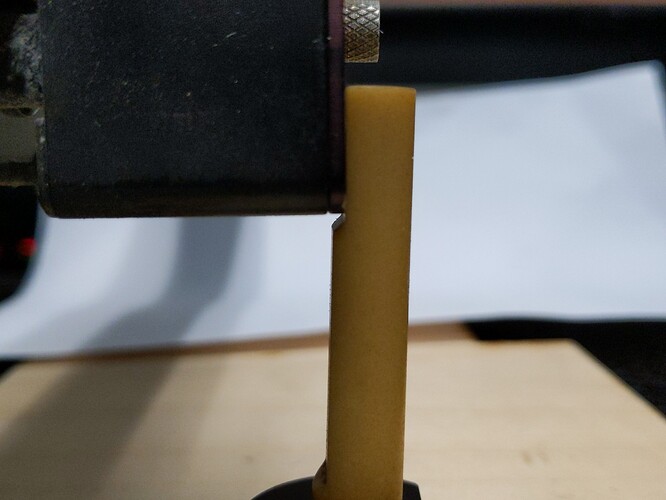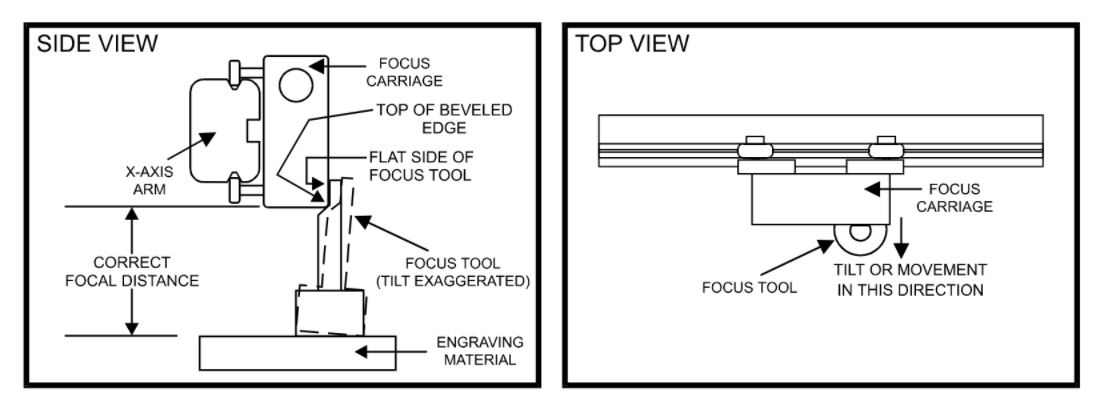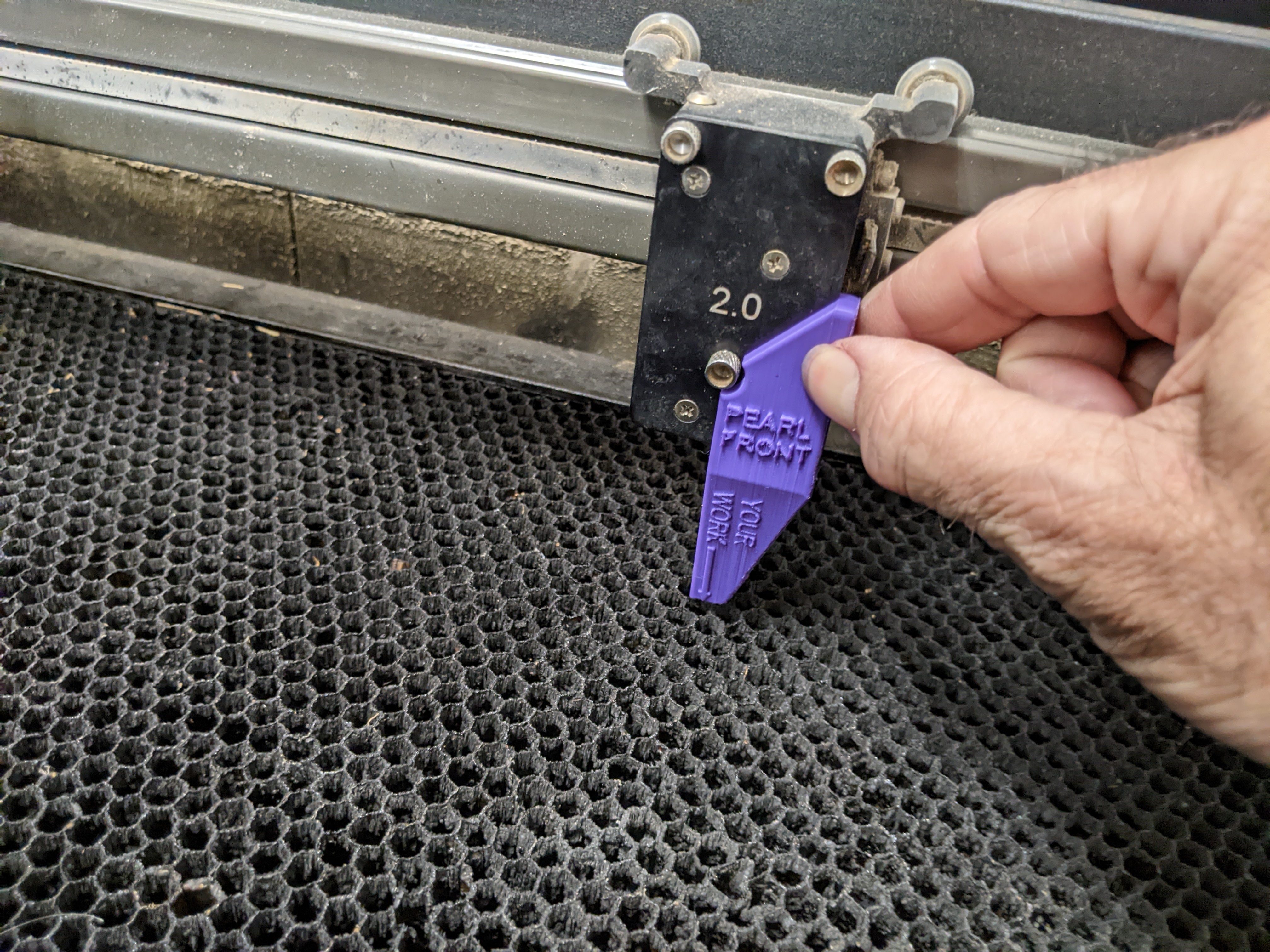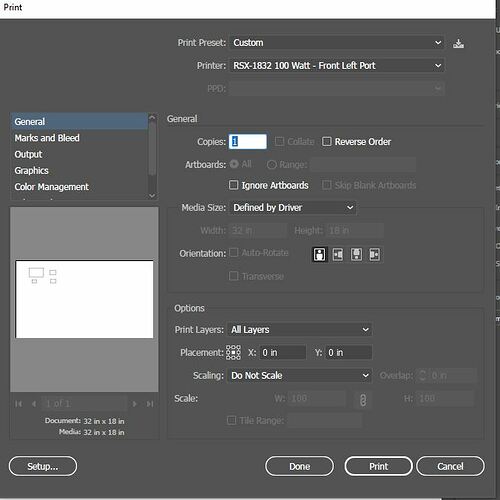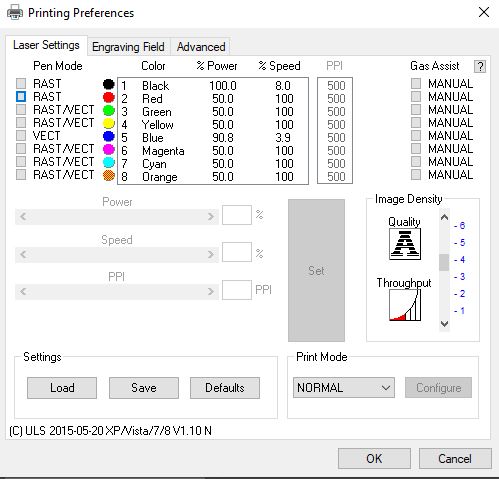Pearl
Pearl is a Royal Mark RSX-1832. It's the same chassis as Blue (it even has ULS badges on the back) but slightly stronger at 100W and has air assist like Red.
Pearl also has a rotary fixture, so you can use it to engrave round things like glassware.
Pearl is online and bookable, but air assist isn't functional at this time (October 2021)
![]() Members must complete the Small Lasers Class before using this tool
Members must complete the Small Lasers Class before using this tool
Pearl is so similar to Blue that when Blue went down we're just steering trained Blue users over here with this guide. It cuts faster and cleaner than Blue, too.
Pearl Setup
Turn on chiller, wait for 20C (or whatever is labeled above the display) which will take under 5 min and the chiller will auto-regulate there. The chiller must be on to run the machine. It’s not harmful to start running earlier, but its power is going to increase as temp drops and it will be inconsistent
Turn on the blower, currently with a switch on a power strip. There is no protection against not turning on the blower but that could damage stuff, so don’t. Will make automatic pretty soon
Set the Machine Origin
(this might be due to the coin cell backup not working, it resets when powered down)
If this is not done, the work will be offset or shifted off the bed entirely and the laser may do weird things on the edges.
#1 Press the X-Y button to enter jog mode
#2 use the arrows to job to the top left of the bed, the LCD should read "POS 0.000x 0.000y" as the second line
#3 The LCD should have the cursor on "SET NEW ORIGIN", so hit "SELECT", ok the "are you sure?", display should now also read ORG 0x 0y as the first line, as shown above.
Set Z for your stock
Pearl has a powered Z axis, but unlike Blue/Red, it is not controlled by driver settings. You lift or lower it to the correct location for your stock thickness and it will always run your job wherever the Z is. It will never move it automatically by the software.
The Z is moved by panel buttons using the Z height shown on the panel's LCD. However, for some reason the Z height and/or focus keeps being incorrectly calibrated, we don't know why (possible user error), so we are NOT using this method until further notice. You need to use the stick, which many users did anyways.
#4 To move the Z, first press the "Z" button on the right once.
The carriage will jump to a focus location. Place YOUR stock UNDER the carriage. Locate the FOCUS STICK in a hole on the left of the bed under the lid.
Locate the RAMP on the stick, just so you understand. This is the measurement point that will contact the BOTTOM LIP of the FRONT of the carriage at the perfect focal distance. Not the side of the carriage, pics are from the left. The stick's step is sloped so it does not pinch or jam against the carriage if adjusted too high, but just tips away.
Place the focus stick ON TOP OF YOUR STOCK LOADED IN THE BED, against the FRONT of the carriage. This is shown LOW, you need to Z UP.
#5 Use the Z UP/DOWN arrows to move the bed. Again, the "Z position" LCD display keeps getting changed somehow so just don't use it for now. When done, just leave it, you don't need to set anything
This is now too high, the ramp tilts the stick away. Go DOWN.
This is perfect. The Z UP/DOWN button deals in 0.1" steps and that's good enough for most apps.
#6 Press the "Z" button on the far right a second time to send the carriage home and return the stick to its hole.
The official ULS manual diagram
The focus stick has a storage hole under the lid, on the left of the bed. In a few cases, the stick has vibrated out during use and blocked the Y motion of the gantry. This won't damage anything, but the gantry's absolute Y position will be lost. The rest of the job will have an offset in the Y and may also collide with the Y+ or Y- end stops. It is also possible that the stick can fall back into the hole afterwards, leaving no evidence of what caused the Y-offset jam. Fix by Re-Home XY or cycling power, and don't leave the stick on the storage hole.
UPDATED FOCUS TOOL
There is now a more refined 3D printed focus tool. It should be clearer how to place it against the carriage (many users are putting the stick on the curved side of the carriage, whereas it must be on the front). This one form-fits where it's supposed to go. This is the right tool for ROTARY use. The stick, placed in the correct spot on the carriage front, will not actually be in line with the top of the work on the rotary chuck. It'll be in front of it, so it won't rest on the work at the correct spot. The 3D printed tool leans back and the "foot" is inline with the laser focal point and the top of the work so the point of contact is correct and exact.
This tool doesn't have a designated storage spot. It's flat enough that simply leaving it under the lid beside the bed anywhere is ok.
Printing From Adobe Illustrator
Like all ULS machines, VECTORS must be very thin or they will be reinterpreted as RASTER graphics. ("HAIRLINE" in Corel, or >=0.001 inch thick).
In Illustrator, change to inch units:
Illustrator->Edit->Preferences->Units->Stroke=Inches to enable Inch unit
Change all vector lines to 0.001" stroke
When you print in Illustrator:
Media size: DEFINED BY DRIVER
Orientation: PORTRAIT
Print Layers: ALL LAYERS
Placement: CENTER, right beside that enter X=0 Y=0 (this seems to override the Placement, entering X=0 Y=0 might be what you really need)
Scaling: DO NOT SCALE
If you set this differently, the job may shift a bunch in +/- X or Y, or may disappear off the workspace all together. The Preview window should appear correctly as shown, however if you did not select CENTER for PLACEMENT, it will shift your job when cutting but unfortunately will NOT appear differently on the Preview window.
“THE CATCH” of using Illustrator: every time you go to ULS’ “Setup” to change your power and print or save from there, Illustrator has been seen resetting Orientation back to Landscape, it must be Portrait. So, reselect Portrait and recheck the above entries after visiting the ULS setup window. The Preview window does not seem to update correctly at this point but the laser will get it correctly.
If anyone knows how to keep Illustrator from reverting like this, that would be great.
ULS's Print Driver Menu
When you do hit SETUP, you see the familiar ULS print driver settings, needed to set speed, power, rastering settings, etc
The difference vs Red and Blue is there's no entry for Z, because it just runs wherever you left it after adjusting with the stick. PPI is now relevant, as this laser uses a pulse-mode source. PPI may change the appearance of the cut edge, becoming serrated if very low. Low settings (150PPI) may cut at greater speed than a higher PPI as the pulsing may be more intense peaks.
150 PPI for cutting and maybe 500 for rastering or fast engraving is a good suggested starting point.
On the second page, make sure ROTARY ENABLED is unchecked (unless this is a rotary job)
Laser Cutter Settings
1/8" plywood 11% speed 150 PPI 0.2" plywood 8% speed 150 PPI
Running
Send job, press START. If you immediately hear TWO BEEPS, your job is EMPTY. Either ORIGIN was not set to 0x 0y (step #1 above), the Orientation is wrong and it shifted all the content off the workspace, or you have VECTOR selected but the LINE WIDTH inside Illustrator, etc WAS NOT SET TO 0.001" WIDTH, or Rotary was left Enabled on a non-rotary job
If RED LIGHT is FLASHING, CHILLER IS OFF or LID IS OPEN. There is also a switch on the front door to remove the honeycomb that will trip this, but it is supposed to be bypassed
The beam flashes with an intense flicker when it hits the honeycomb. This is normal
Shutting Down
Please DO NOT shut down Pearl with the bed jogged all the way down. This puts it in a problem state upon power-up as it's already triggering a limit sensor and it will be unable to jog up until the recovery procedure is used. This is probably occurring when rotary users are replacing the honeycomb. It's ok to jog all the way to the bottom, but please just jog back up at least 1/2" before powering it off.
Turn off. Peal’s power switch, the chiller, the exhaust blower. In any order.
Please remove small debris from the honeycomb and vacuum if necessary
Z-bottom Recovery Procedure
If the Z was jogged all the way down before being powered off, the firmware will be confused upon powerup. It uses a system that puts both Z+ and Z- normally-closed limit switches in series, either one can break the circuit and the firmware normally looks at which direction is was jogging before the line is tripped. Upon powerup, that history isn't available and by default it assumes that the Z+ limit is what must be triggered, so it locks out jog-up, it will allow you to try to jog down but there is nowhere to go, it will just stall the stepper
First off, please avoid powering off the machine with the bed jogged all the way to the end. Jog it up even half an inch and it'll be fine.
The shorthand version of the fix is Preferences->Configuration, then press Select+DownArrow. "Z-axis override OFF" appears, press Select
Escape, jog Z up over 1/2".
Repeat (Preferences->Configuration, press Select+DownArrow). "Z-axis override ON" appears, press Select.
It would be good to re-home to the Z to get the coordinate system in sync (that can be done from the panel), but I don't think what we're doing uses those coordinates as we set everything via focal measurement stick. Re-homing the Z jogs it down to the lower limit switch again so, obviously, jog it up a bit before powering off.
I don't know why the official procedure asks to Re-home XY. That doesn't seem relevant.
The official longhand version of the recovery procedure from the mfg is as follows:
Caution: When turning ON the Z-axis Override, the upper and lower Z axis limit switches are no longer detected by the system!
1) Turn on the System, wait for “READY” to appear in the display
2) Press Escape once
3) Scroll down to Preferences and press Select
4) Scroll down to Configuration and press Select
5) Simultaneously, press the Select and Down Scroll key (the down arrow key next to the display) and “Z-axis Override OFF” will appear
6) Press Select once to turn it ON
7) Press Escape three times to get back to the main menu
8) Press X-Y once
9) Scroll down to Re-home XY and press Select and wait for the motion system to re-home
10) Press Escape to complete the procedure
11) Repeat the procedure to turn Z-axis Override back OFF
12) Press the Z button and use the Up and Down arrows to move the Z table.
Maintenance
This tool is owned by Danny Miller and hosted at Asmbly for members to use. Please submit a problem report if maintenance is required.
